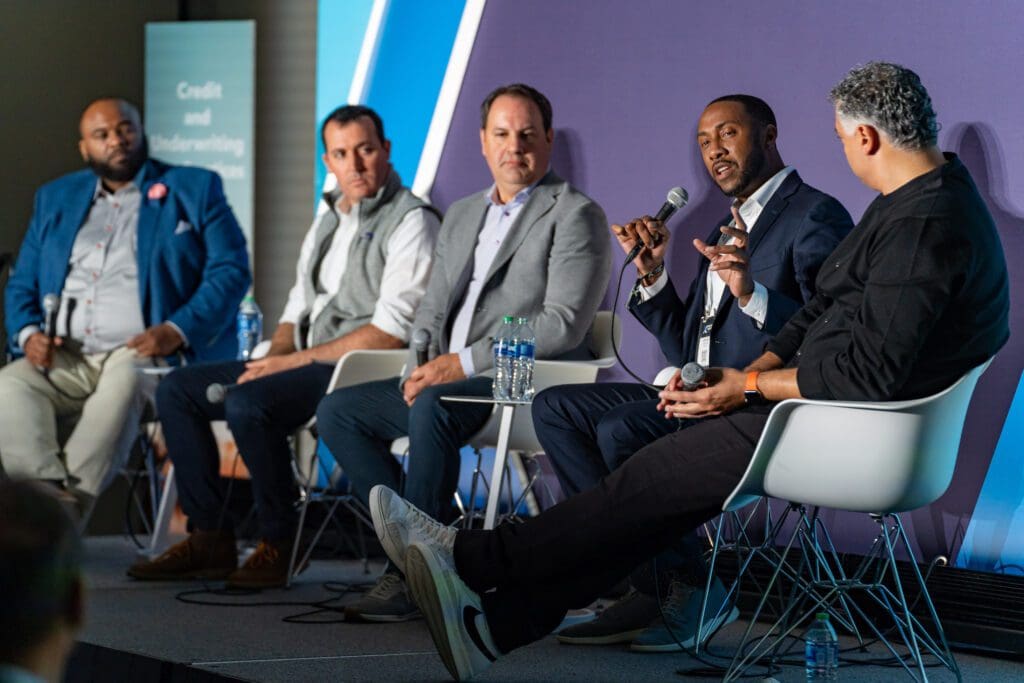At Fintech Nexus USA last month, the Credit & Underwriting track was always very popular. With an uncertain economy and many lenders tightening their credit boxes, there was a lot to talk about.
The track was led off by Al Crawford, the CEO, and Co-Founder of BHG Financial, the sponsor of the track. He went into some detail about the lessons he has learned over the 22 years he has been running a fintech lender. What was really interesting was when he shared his learnings from going through the financial crisis in 2008-09. People were also interested in the makeup of his credit team.

Tokenization is coming to credit data. Soon, no personal identifiable information (PII) will be stored in central databases; everything will be tokenized so that data breaches will become far less critical. The technology is here today, and pilots are starting.
It is always good to hear from people on the front lines, so the room was packed hearing from those making the credit decisions at fintech lenders today. The mood was surprisingly upbeat, but everyone acknowledged today’s unique challenges of high interest rates and inflation. It was pointed out that underwriters need to be either proactive or super-reactive to adjust to quickly changing circumstances.
AI was a hot topic in many sessions. AI is very good at identifying anomalies and early trends by consuming vast amounts of data, which can help with risk management. Risk teams cannot keep up today unless they are using machine learning. It also is essential to leverage AI for identity verification to ensure people are who they say they are.
We heard from a leader in auto and consumer lending at Wells Fargo, and she also wanted to talk about AI and how it helps to lighten the workload, making underwriters much faster and putting their focus on the more complex and critical work. They use AI to power their virtual assistant, Fargo, where people can have natural conversations without waiting for a live agent to become available.

Fairness in lending is also a hot topic today, particularly in Washington, so fintech needs to take the lead here. But as one of the panelists shared, fairness is not about tweaking models when entire classes of people are considered less trustworthy. You have to create a system of fairness that gives people a chance to overcome this lack of trust; in a way, you need to trip up the current system.
Cash flow underwriting is the bright, shiny object in the credit space today. Some lenders are seeing a 10% or even 20% lift in the predictiveness of their model through cash flow underwriting. This allows lenders to say yes to more borrowers, which is why this type of underwriting is becoming so popular.
Delinquencies are expected to rise as we approach a possible recession, making loan servicing more crucial than ever. Modern servicing technology is critical in uncertain times because you need to process the real-time data, surface that data back into underwriting systems to help with risk decisions and communicate proactively to the end borrower.
We wrapped up the day with a fascinating discussion on consumer permissioned data versus traditional credit data with two industry veterans. It isn’t an either/or argument; the consensus is that both data types have their place in an underwriters toolkit.
Links to Podcast Audio
Lessons Learned During the Difficult Times
The Future of Credit Report Data: Tokenization
How Fintech Lenders Underwrite Borrowers Through a Challenging Time
Mitigating Risks While Reaping the Rewards of AI to Accelerate Identity Verification
How Banks Benefit from AI & Data in Auto and Consumer Lending
Fairness Through Blindness isn’t Working – it is Time for a New Approach
Innovations in Cash Flow Underwriting
How Lenders Can Leverage Servicing Technology to Navigate Uncertain Times
Consumer-Permissioned Data vs Traditional Credit Data: Which is More Valuable Today?


